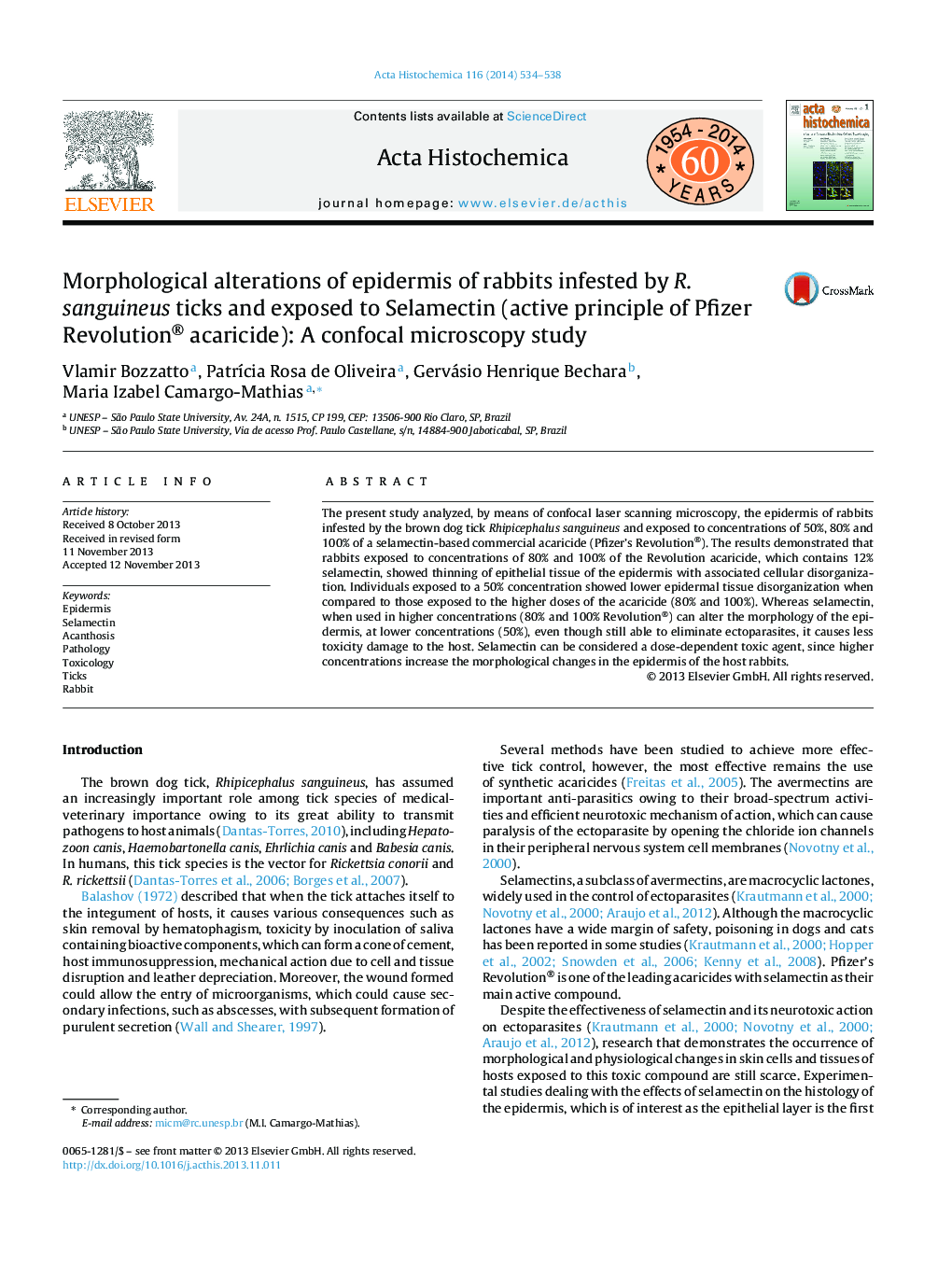| Article ID | Journal | Published Year | Pages | File Type |
|---|---|---|---|---|
| 1923561 | Acta Histochemica | 2014 | 5 Pages |
Abstract
The present study analyzed, by means of confocal laser scanning microscopy, the epidermis of rabbits infested by the brown dog tick Rhipicephalus sanguineus and exposed to concentrations of 50%, 80% and 100% of a selamectin-based commercial acaricide (Pfizer's Revolution®). The results demonstrated that rabbits exposed to concentrations of 80% and 100% of the Revolution acaricide, which contains 12% selamectin, showed thinning of epithelial tissue of the epidermis with associated cellular disorganization. Individuals exposed to a 50% concentration showed lower epidermal tissue disorganization when compared to those exposed to the higher doses of the acaricide (80% and 100%). Whereas selamectin, when used in higher concentrations (80% and 100% Revolution®) can alter the morphology of the epidermis, at lower concentrations (50%), even though still able to eliminate ectoparasites, it causes less toxicity damage to the host. Selamectin can be considered a dose-dependent toxic agent, since higher concentrations increase the morphological changes in the epidermis of the host rabbits.
Related Topics
Life Sciences
Biochemistry, Genetics and Molecular Biology
Biochemistry
Authors
Vlamir Bozzatto, PatrÃcia Rosa de Oliveira, Gervásio Henrique Bechara, Maria Izabel Camargo-Mathias,
